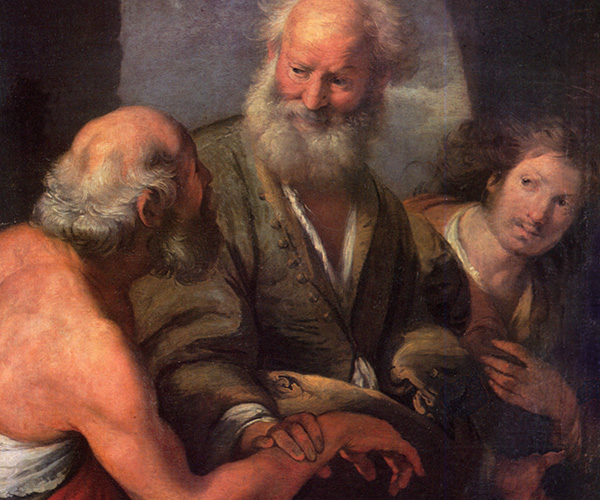Avondale PhD graduate shows how Bible writer uses action to share gospel
Bible writer Luke uses not only speech but also hand function to share the gospel of Jesus Christ, research by an Avondale doctoral graduate shows.
“Accidental academic” Dr Carole Ferch-Johnson examined the way the early church represented Christ and His mission through the media of human hands and feet. In particular, she studied the significance of hands and feet in two narratives from Acts: the healing by Peter and John of the lame beggar at the temple (Acts 3) and the conversion of Saul on the road to Damascus (Acts 9).
She compared use of the Greek word ἐπιτίθημι (to lay upon) in the two narratives with its use in the Gospel of Luke and in: the Greek writings from Judaism of that era; the writings of Greek authors quoted by Luke in Acts; and, because the narratives address healing, the medical works of Hippocrates and Soranus.
She found the laying on of hands by Jesus’s disciples in the narratives to heal and to empower is unique to Luke’s writings—the experiences appear elsewhere in Acts and in Luke, where Jesus Himself introduces touch to heal. Luke’s understanding of the power of touch comes, Ferch-Johnson believes, from his training as a physician in the Hippocratic tradition.
“Hippocrates is the Greek guru of medicine, and he practised hands-on medicine,” says Ferch-Johnson. “The hands are everywhere in his writings. Luke understands this. In Acts, he notes and features the hands and their place in the mission and ministry of the apostles, particularly through healing.” She gives as an example the healing of the lame beggar (Acts 3:1-11), where Peter takes the hand of the man with his own right hand and pulls him to his feet. This is “a telling moment in the transition from an Old Testament temple-centred religion to a New Testament people-focussed faith.”
This focus on healing and empowerment through touch should encourage Bible readers to communicate the message of the gospel on emotional not just informational levels, says Ferch-Johnson. The former helps us “understand people and approach people in a more knowing and caring way, and probably with more success.”
Ferch-Johnson first shared these findings at the invitation of Professor Alanna Nobbs, president of the Society for the Study of Early Christianity. She based the paper she presented during a lecture at Macquarie University on September 9, 2015, on her Doctor of Philosophy thesis, Human hands and feet and their functions as media of communication in the narratives of Acts 3:1-11 and 9:1-19a.
The PhD grew out of Ferch-Johnson’s life work as an educator in people skills and her years of experience in pastoral care. As a retiree, Ferch-Johnson studied Ancient Greek at Macquarie and, with a master’s degree from Andrews University, applied to begin a doctorate at Avondale College of Higher Education. She graduated in December 2016.
Lecture: Dr Carole Ferch-Johnson | June 3
“Talking hands and listening feet in the narratives of Acts.” Dr Carole Ferch-Johnson has examined the way the early church represented Christ and His mission through the media of human hands and feet. In particular, she’s studied the significance of hands and feet in two narratives from Acts: the healing by Peter and John of the lame beggar at the temple (Acts 3) and the conversion of Saul on the road to Damascus (Acts 9). In her lecture, Carole will explain how her study provided new insights into the narratives and share practical implications. Presented by Avondale College of Higher Education and Sydney Adventist Forum. Ella Hughes Chapel, Avondale College of Higher Education (Lake Macquarie campus), Saturday, June 3, 3.30 pm. Freewill offering.
LEARN MOREShare

